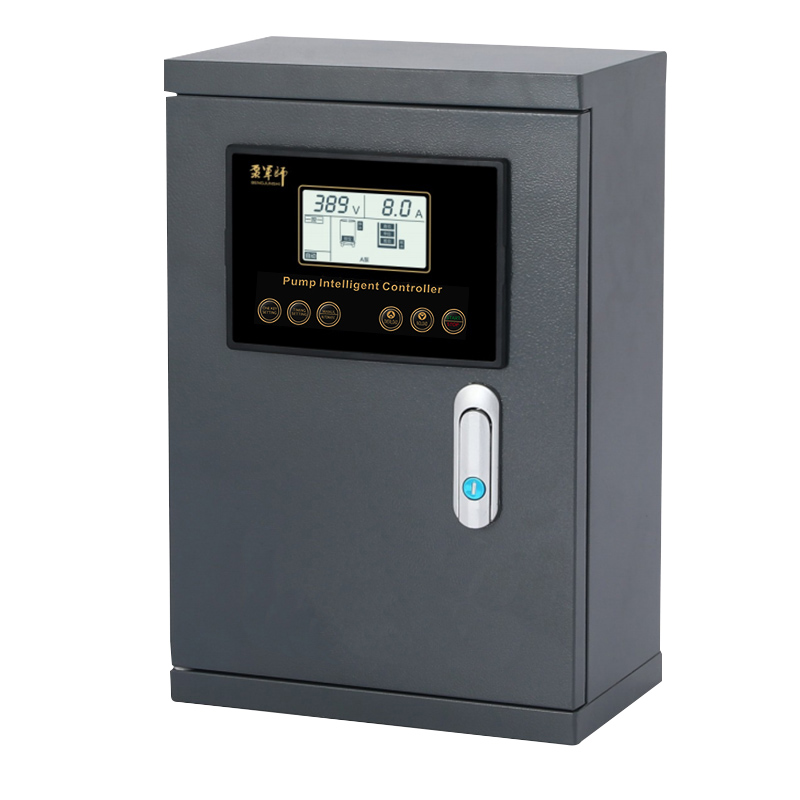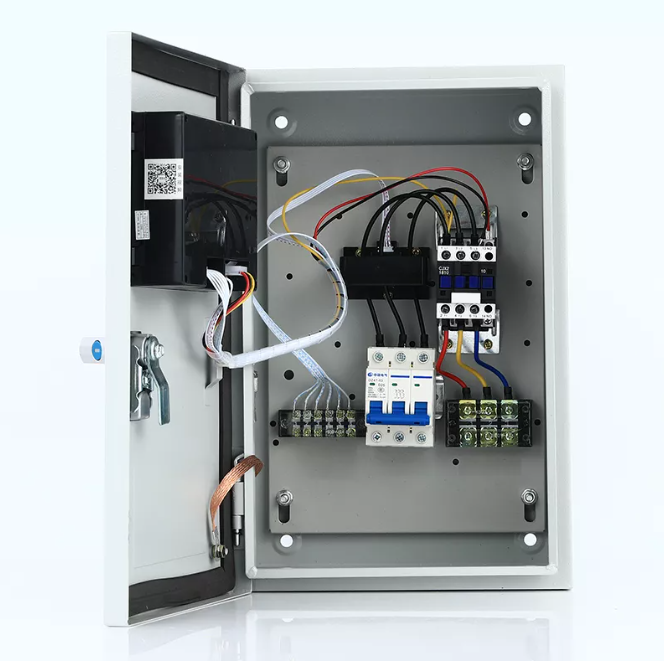The water pump control box is a key component to ensure the normal operation of the water pump. It is widely used in the fields of household water supply, agricultural irrigation, industrial water use, etc. The control box is not only responsible for starting and stopping the water pump, but also provides overload protection and short circuit protection, thereby improving the safety and reliability of the system. However, during use, the water pump control box may have various problems that affect the normal operation of the water pump. This article will discuss three common problems in detail: how to reset the water pump control box, the reasons and solutions for the water pump control box not starting, and how to maintain and maintain the water pump control box. I hope that through these contents, users can better understand and manage the water pump control system.
How do I reset my water pump control box?

Resetting the water pump control box is an effective way to solve common water pump failures, especially when there is a short circuit, overload or voltage fluctuation. The following are detailed reset steps and precautions.
Determine the source of the problem
Before resetting the water pump control box, you first need to determine whether it really needs to be reset. Common situations that require resetting include:
The protection device in the control box is triggered, causing the water pump to stop working.
The indicator light on the control box displays an error code or fault status.
The pump stops running suddenly and cannot be restarted by normal operation.
Safety preparation
Before resetting, make sure all operations meet safety standards:
Disconnect the power supply of the pump and control box to prevent electric shock.
Wear appropriate protective equipment, such as insulating gloves and safety glasses.
Make sure the surrounding environment is dry and avoid contact with water and electrical appliances.
Reset steps
Power off and wait: Disconnect the power supply of the control box and wait for a few minutes to ensure that the internal circuits and capacitors are fully discharged.
Check and clean: Open the control box and check whether the internal components and connections are loose or damaged. Clean the inside of the control box to remove dust and dirt, and ensure that all connections are secure.
Reset button: If there is a reset button on the control box, press the button to reset. Some control boxes may need to be pressed for several seconds.
Re-power on: Turn off the control box and reconnect the power supply. Watch the indicator light on the control box to ensure that it returns to normal status.
Test the pump: Start the pump and check whether it resumes normal operation. If the pump still cannot start, it may be necessary to further check the fault of the control box or the pump itself.
Notes
Reference manual: The design and function of each control box may be different. Please read the product manual carefully before operation and follow the manufacturer's instructions.
Regular maintenance: Regularly check and maintain the control box, replace aging or damaged components in time to prevent failures.
Professional help: If the problem is not solved after resetting, it is recommended to seek the help of professional technicians for detailed fault diagnosis and repair.
Through the correct reset steps, many common problems of the water pump control box can be effectively solved to ensure the normal operation of the water pump system.

Why is my water pump control box not starting?
The failure of the water pump control box to start is a common problem encountered by users, and its reasons may involve many factors. The following will analyze the common reasons and their solutions in detail.
Power supply problem
First check whether the power supply is normal:
Power connection: Make sure that the connection between the control box and the power supply is firm and correct. Check whether the plug and socket are in good contact and are not loose or oxidized.
Circuit breakers and fuses: Check whether the circuit breakers and fuses inside the control box and on the power line are working properly. If the circuit breaker is found to be tripped or the fuse is blown, find out the cause and replace or reset it.
Internal control box failure
The electronic components and wiring inside the control box may fail:
Capacitor: If the starting capacitor in the control box is damaged, the pump may not start. Check the capacitor for swelling or leakage, and replace it if necessary.
Contactors and relays: Contactors and relays are responsible for controlling the flow of electricity. If these components are damaged or have poor contact, the control box will not start the pump. Check these components to make sure they are working properly.
Pump problems
Sometimes the problem is not with the control box, but with the pump itself:
Motor failure: If the pump motor is damaged or the overheating protection device is activated, the pump will not start. Check the motor for abnormal noise, overheating or other abnormal phenomena.
Cables and wiring: Check the cables and wiring connecting the pump to the control box to ensure that they are not damaged or loose.
System settings and configuration
In some cases, improper system settings can also cause the control box to not start:
Timer settings: If the control box is equipped with a timer or automatic control function, make sure it is set correctly and not in sleep or protection mode.
Pressure switch: Pump systems usually have a pressure switch. If the pressure switch is set incorrectly or damaged, it may prevent the pump from starting. Check the setting and status of the pressure switch.
Troubleshooting steps
Preliminary inspection: Disconnect the power supply and check all external connections and cables to ensure that they are not loose or damaged.
Internal inspection: Open the control box and check the internal components, including capacitors, contactors, relays and fuses, to ensure that they are intact.
Test the power supply: Use a multimeter to test the power supply voltage to ensure that the power supply is normal.
Reset the control box: Follow the previous steps to reset the control box and observe whether it returns to normal.
Pump inspection: If the problem is still not solved, check the water pump motor and connections to ensure that it is working properly.
Professional help
If the problem cannot be solved after the above steps, it is recommended to seek the help of professional technicians. Professionals can find the root cause of the problem through more in-depth inspection and testing, and make necessary repairs or replacements.
Through systematic inspection and troubleshooting, the problem of the water pump control box not starting can be effectively solved, and the normal operation of the water pump system can be ensured.
How to maintain and care for a water pump control box?
Regular maintenance and care of the water pump control boxes can extend its service life and ensure the efficient operation of the system. Here are some suggestions and steps for maintenance and care.
Regular inspection
Regular inspection of the control box status is the basis of maintenance:
Appearance inspection: Check the appearance of the control box every month to ensure that there is no damage or water ingress to the box. Remove dust and dirt on the surface to keep the control box clean.
Wiring inspection: Check the wiring inside and outside the control box every quarter to ensure that there is no looseness, breakage or oxidation. Pay special attention to the joints and connections of the high-voltage line.
Cleaning and maintenance
Keeping the inside of the control box clean can help avoid failures:
Internal cleaning: Open the control box every six months and use compressed air or a soft brush to clean the internal dust. Be careful not to damage the circuit board and components.
Moisture-proof treatment: The control box should be installed in a dry and ventilated place to avoid humid environments. If the environment is humid, consider using a desiccant or moisture-proof device.
Component inspection and replacement
The components inside the control box need to be regularly inspected and replaced if necessary:
Capacitors: Check the starting and running capacitors every year to ensure that they are not swollen or leaking. If abnormalities are found, replace them in time.
Contactors and relays: Check the contacts of the contactors and relays for burns or oxidation every year and replace them if necessary.
Fuses and circuit breakers: Check fuses and circuit breakers to ensure they function properly. If a fuse or circuit breaker is blown or tripped, find out the cause and replace it.
Protective measures
Taking appropriate protective measures can reduce the occurrence of faults:
Surge protection: Install a surge protector to prevent voltage fluctuations and lightning strikes from damaging the control box.
Overload protection: Ensure that the control box is equipped with an overload protection device to prevent the pump from overloading.
Fire prevention measures: A fire extinguisher should be installed near the control box to prevent fires caused by electrical faults.
Environmental considerations
The installation environment of the control box has an important impact on its performance and life:
Ventilation and heat dissipation: Ensure that the control box is installed in a well-ventilated place to avoid overheating. Clean the heat sink and fan regularly to ensure heat dissipation.
Dustproof and waterproof: The control box should have good dustproof and waterproof performance, especially when installed outdoors, additional protective measures should be taken.
Daily operation precautions
The following matters should be paid attention to in daily operation to protect the control box:
Correct operation: Follow the instructions in the operating manual to avoid frequent start and stop and overload operation.
Monitor system status: Regularly check the indicator lights and display screens on the control box to monitor the system status and promptly detect and handle abnormal situations.
Record maintenance logs: Record the content and date of each inspection, cleaning and maintenance to help track and manage the status of the equipment.
Professional maintenance
Regularly ask professional technicians to conduct comprehensive inspections and maintenance:
Annual inspection: Ask professionals to conduct a comprehensive inspection at least once a year, including electrical testing and system diagnosis.
Fault repair: When a fault occurs, contact professional technicians in time for repair to avoid further damage caused by self-repair.
Through systematic maintenance and care, the service life of the water pump control box can be effectively extended and the reliability and efficiency of the system can be improved.
Conclusion
As the core component of the water pump system, the normal operation of the water pump control box is crucial to the stability of the entire system. By understanding how to reset the water pump control box, solve the problem of not starting, and perform daily maintenance and care, common faults can be effectively avoided and solved to ensure the long-term stable operation of the system. Regular inspection and maintenance can not only extend the life of the equipment, but also improve the safety and reliability of the system, providing users with long-lasting and stable water supply services. During use, scientific management and timely maintenance will be the key to ensuring the efficient operation of the water pump control box.












